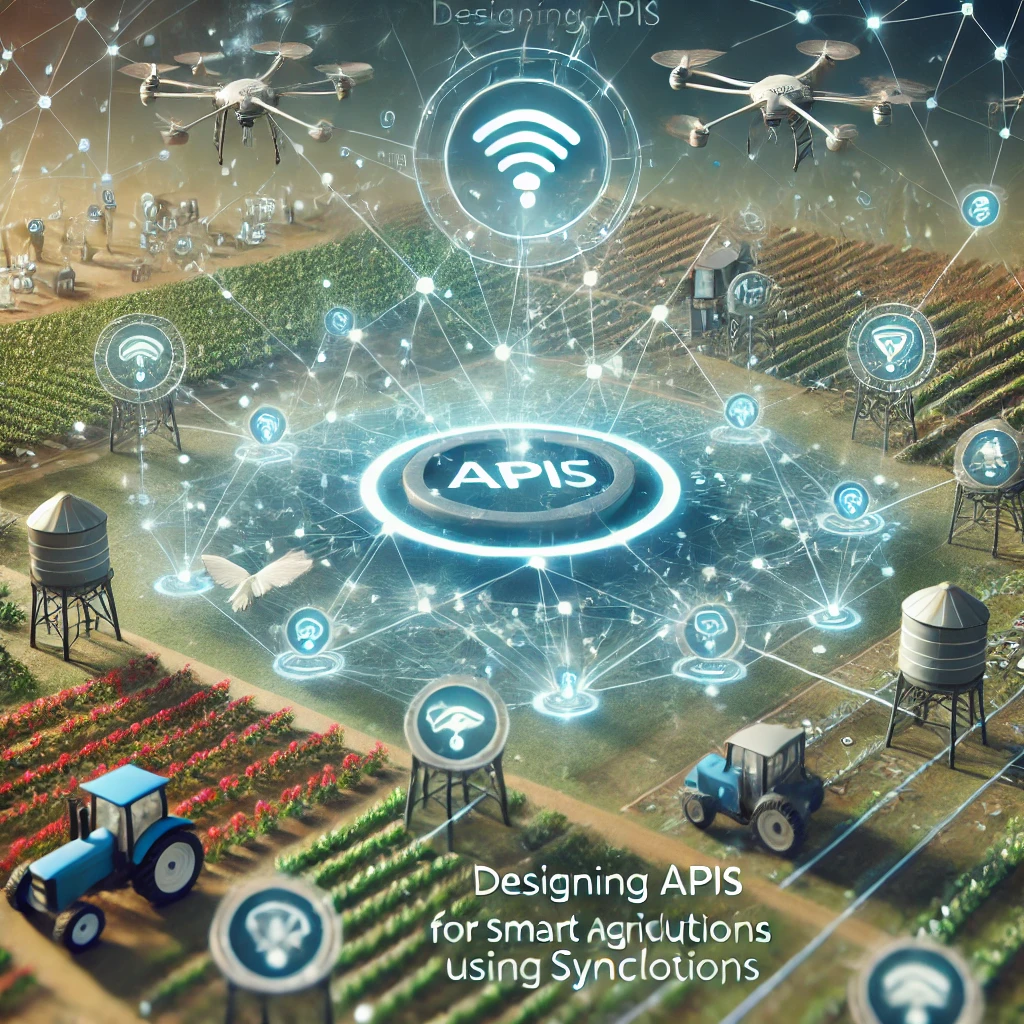Designing APIs for Smart Agriculture Solutions Using Syncloop

Importance of APIs in Smart Agriculture
APIs are the backbone of smart agriculture, enabling:
- Real-Time Data Collection: Integrating data from IoT sensors for weather, soil, and crop monitoring.
- Automation: Streamlining irrigation, fertilization, and pest control processes.
- Predictive Insights: Providing actionable recommendations based on analytics and historical data.
- Scalability: Supporting expanding operations with efficient data processing.
Syncloop simplifies the complexities of building APIs that support these functionalities, ensuring performance and scalability.
Features of Syncloop for Smart Agriculture APIs
1. Dynamic Workflows
Automate agricultural processes such as irrigation control, pest management, and crop monitoring with Syncloop’s Ifelse and Await tools.
2. Data Transformation
Transform raw sensor data into actionable insights using Transformers, ensuring compatibility across platforms.
3. Real-Time Monitoring
Track data from sensors, APIs, and workflows in real time using Syncloop’s analytics dashboard.
4. Secure Communication
Protect sensitive agricultural data with token-based authentication, encrypted communication, and access control mechanisms.
5. Scalable Gateways
Handle high volumes of sensor data and API requests with Syncloop’s scalable infrastructure.
6. Error Recovery
Ensure data reliability with retry mechanisms and fallback workflows for failed API calls or sensor data loss.
Building Smart Agriculture APIs with Syncloop
Step 1: Identify Functional Requirements
Determine the functionalities your API needs to support, such as:
- Weather data integration.
- IoT sensor connectivity.
- Automated irrigation and fertilization.
- Predictive analytics for crop health.
Step 2: Configure API Endpoints
Set up Syncloop API endpoints for data collection, processing, and integration. Examples include:
- /sensor-data/upload for IoT devices.
- /analytics/recommendations for actionable insights.
- /controls/irrigation for automated systems.
Step 3: Design Automation Workflows
Leverage Syncloop’s workflow automation tools to streamline agricultural processes. For example:
- Use Ifelse controls to adjust irrigation based on weather and soil data.
- Implement Await to synchronize data from multiple sensors before processing.
Step 4: Transform Data
Use Transformers to standardize sensor data formats and integrate them into analytics platforms.
Step 5: Secure API Interactions
Enable token-based authentication and encrypted communication to protect data exchange between devices and APIs.
Step 6: Monitor and Optimize
Track real-time metrics, such as data latency, throughput, and API usage, using Syncloop’s monitoring tools. Use insights to optimize workflows and enhance system performance.
Real-World Applications
1. Precision Farming
Integrate APIs for real-time soil, crop, and weather monitoring to optimize resource usage and improve yield.
2. Livestock Management
Enable APIs for tracking animal health, feed levels, and environmental conditions, ensuring efficient and sustainable operations.
3. Supply Chain Optimization
Provide APIs for monitoring crop storage, transportation, and delivery, ensuring quality and reducing waste.
4. Greenhouse Automation
Develop APIs for controlling temperature, humidity, and lighting in greenhouses based on real-time sensor data.
Best Practices for Smart Agriculture APIs
- Ensure Data Accuracy: Validate data from sensors to avoid incorrect decisions.
- Optimize for Scalability: Use Syncloop’s scalable gateways to handle growing operations and sensor deployments.
- Prioritize Security: Implement robust authentication and encryption to protect sensitive agricultural data.
- Leverage Real-Time Insights: Monitor workflows continuously to identify and resolve issues promptly.
- Test for Reliability: Simulate various agricultural scenarios to validate API performance and resilience.
Why Choose Syncloop for Smart Agriculture?
Syncloop’s combination of dynamic workflows, real-time monitoring, and scalable infrastructure makes it an ideal platform for building APIs that meet the unique demands of smart agriculture. Its user-friendly interface and robust security features simplify the complexities of integrating diverse technologies into a cohesive system.
Conclusion
Smart agriculture solutions rely on well-designed APIs to deliver real-time data, predictive insights, and automated workflows. Syncloop equips developers with the tools to create scalable, secure, and efficient APIs that drive innovation in agriculture. Whether you’re building for precision farming, greenhouse automation, or livestock management, Syncloop ensures your APIs are ready to meet the challenges of modern farming.
Back to Blogs